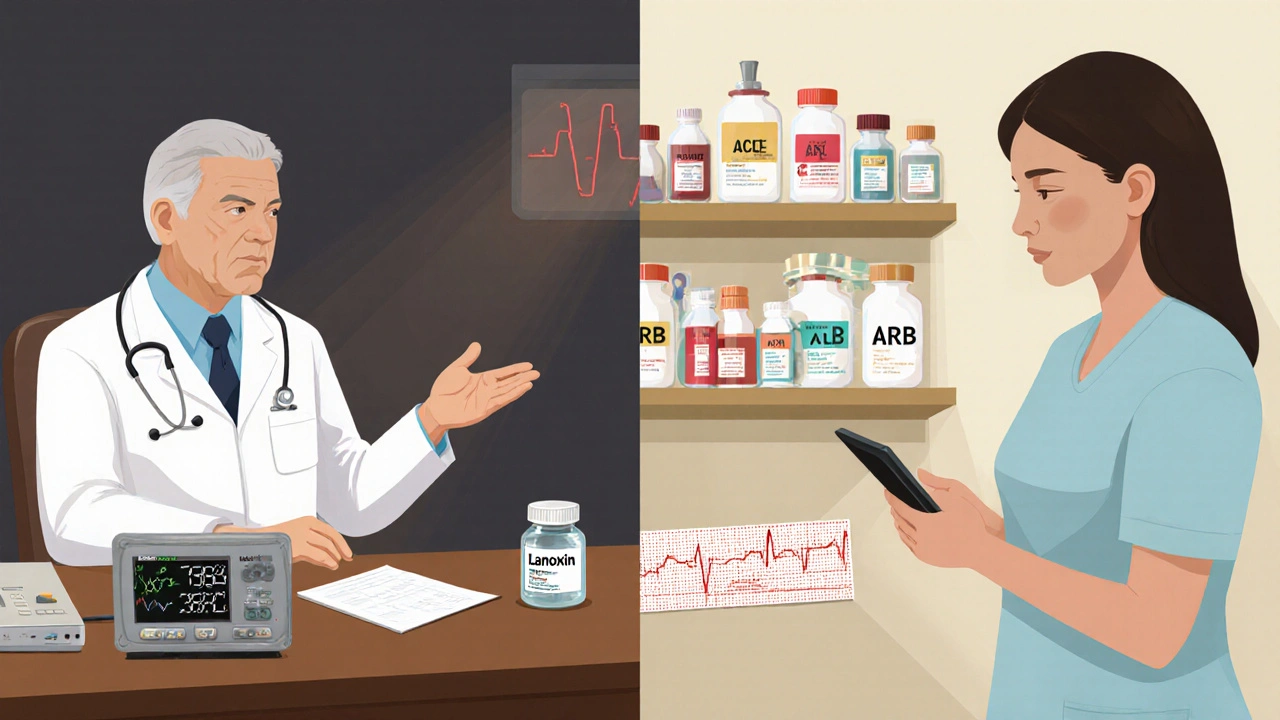Digoxin: Essential Facts for Patients and Professionals
When working with Digoxin, a cardiac glycoside that strengthens heart muscle contractions and helps control abnormal rhythms. Also known as digitalis, it Digoxin is frequently prescribed for heart failure, a condition where the heart cannot pump enough blood and for atrial fibrillation, an irregular, often rapid heart rate that can lead to strokes. The drug works by inhibiting the sodium‑potassium pump, which raises intracellular calcium and improves cardiac output. Because its therapeutic window is narrow, clinicians rely on serum digoxin level monitoring, a blood test that ensures the drug stays within a safe range. This monitoring links directly to toxicity prevention, as elevated levels can cause nausea, visual disturbances, and dangerous arrhythmias. In practice, Digoxin therapy often involves coordination with other heart medicines such as beta‑blockers, ACE inhibitors, or anticoagulants, making drug‑interaction awareness a core part of patient education.
Key Considerations for Digoxin Users
Beyond the core uses, several related concepts shape how Digoxin is prescribed and managed. Dosage adjustment, especially in patients with kidney impairment or the elderly, is critical because reduced clearance raises toxicity risk. Drug interactions, such as with amiodarone, quinidine, or certain antibiotics, can increase serum levels unexpectedly and require close monitoring. Education on recognizing early signs of toxicity—like blurred vision, yellow‑green halos, or persistent fatigue—empowers patients to seek prompt care. Because many of the articles in this collection discuss drug comparisons, safe online purchases, and side‑effect profiles, readers will find practical guidance on navigating Digoxin’s place among other cardiovascular agents, understanding its contraindications, and implementing effective monitoring protocols. Armed with this groundwork, you’re ready to explore the detailed posts below that dive into dosing charts, interaction tables, and real‑world patient experiences.

